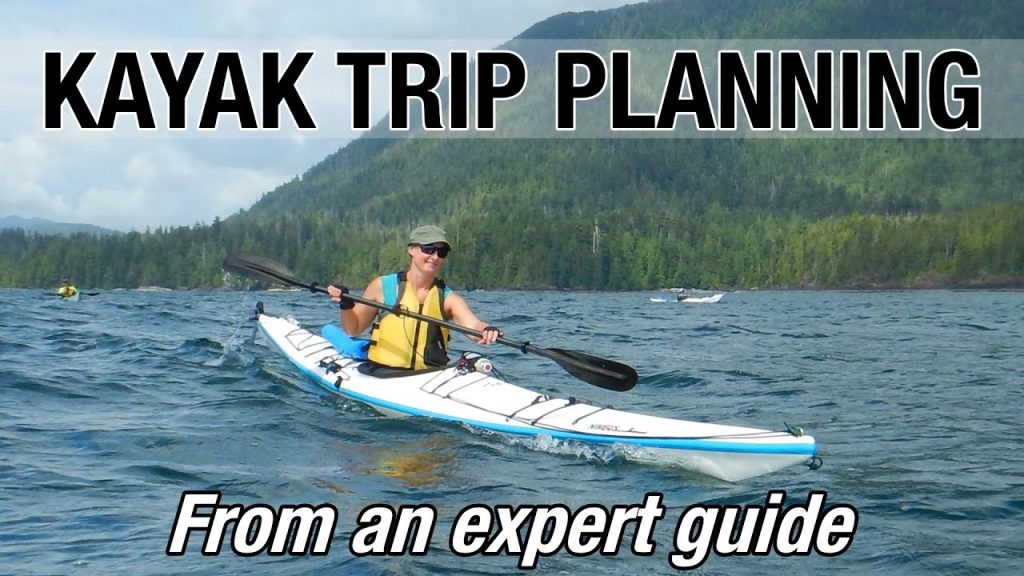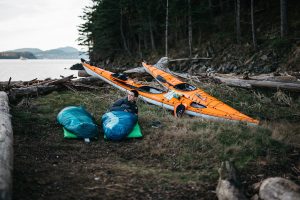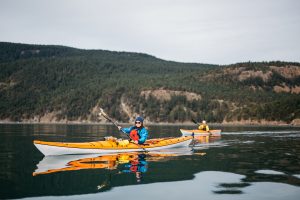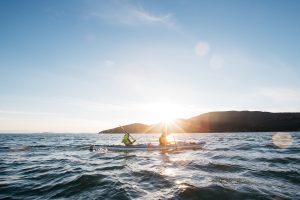How To Plan A Sea Kayak Trip? The temptation to be off the grid has never been higher than it is now, in the age of information technology and social networking. What better way to do that than to put our digital lives aside and go in a sea kayak to locations without mobile phone service, where the wind is your sole employer and the sun and moon set your timetable. Here are some of my ideas for How To Plan A Sea Kayak Trip, let’s explored our article.
Contents
How To Plan A Sea Kayak Trip?
1. Where is Sea Kayak?
In order to find a suitable paddling site for your group’s ability level, you must first acknowledge that your group is only as powerful as its weakest paddler. What therefore qualifies as a suitable paddling location? If someone in your group can’t physically get back into their kayak without assistance, this is a significant restriction because you’ll have to tow them and their gear to shore if they turn over and swim.
In this situation, you should stay in an area of water that is shielded from wind and waves and conveniently located near the coast. It is fair to start traveling farther from the shore if everyone in the party can roll or enter the kayak with confidence after swimming, but it is even more crucial that you adopt a cautious and safety-conscious attitude while choosing your route. We’ll look at a few factors to take into account to make your travel safer.
2. How to get to Sea Kayak?
According to our guide for How To Plan A Sea Kayak Trip. What bail-out or contingency plan chances are available is a crucial consideration when planning a kayak trip. It’s crucial to have a backup plan in case your initial plan proves to be unworkable or even hazardous. People frequently end themselves in difficulties because they believe they have no choice but to stick to their original strategy, which leads to problems.
What are your alternatives, for instance, if the wind suddenly picks up or a rainstorm is approaching? The volume of motorized boat traffic could potentially be too much to handle. It’s crucial to make a float plan and deliver it to a person who won’t be traveling with you once you’ve decided on a paddling route and some backup plans. The float plan doesn’t have to be elaborate, but it should indicate where you aim to go, a basic idea of your timetable, and any backup plans you have in case your original intentions change. A float plan is useful for day excursions or multi-day journeys since it will provide rescuers with a significant edge if something happens and they need assistance.
Many individuals won’t make the effort to create contingency plans or float plans if they are only taking a day trip. However, day journeys are sometimes riskier than multi-day adventures since paddlers typically don’t leave the house prepared to change their plans or spend the night outside. As a result, you’ll be more motivated to take a chance to return home. Because of this, it’s still crucial to create backup plans and a float plan for day excursions. You should always keep an emergency kit in your kayak for this reason as well.
3. Some tips to travel to Sea Kayak to have a wonderful trip
- Divide the Boat.
Beginner sea kayakers typically struggle to get used to the necessity of maintaining balance while paddling. Kayaking in a tandem boat with another person considerably reduces the possibility of you tipping your boat when the waves are big and you’re afraid of doing so. In actuality, tandem cycling offers far more benefits than just balance!
You’ll have twice as much paddling power in a tandem kayak, allowing you to travel further and more quickly. Additionally, you may unwind a bit! It may significantly boost energy levels and unquestionably put your crew in a happier mood when you’re paddling lengthy distances. The ability to carry additional items is the third benefit of using a tandem kayak for paddling. The boat is a little broader and longer, so you’ll have more room for any additional camping chairs or other comfort items you might want to bring.
- Take A Paddle Float
Try utilizing a kayak paddle float if riding in tandem is not an option. This is only a little nylon float that fits over the paddle blade with ease. It not only gives you a very simple way to steady yourself and your boat, but it also offers unparalleled assistance in the event that you tip the boat and have to swim ashore.
- Pay Attention to the Current and Wind
If you know how to exploit the wind and the current in your favor, a general “average” speed for sea kayaking would be around 3 miles per hour. However, 3 miles per hour might quickly become half a mile per hour if you catch the wind or current at the incorrect time of day. To avoid running out of energy midway through your next kayaking excursion, be sure to pay attention to the wind and current patterns while planning your journey.
- Ensure you are using the proper equipment.
In general, the majority of your equipment may be utilized for a variety of activities. For instance, your hiking pants may likely be utilized for fishing, camping, or simply lounging about camp. But unique equipment is required for water activities, particularly sea kayaking. You run the danger of having your equipment wet because you’ll be entering chilly water.
Conclusion:
Being on the ocean and in close proximity to Mother Nature means that when something does go wrong, it might go very badly very quickly. Here’s how to prepare in advance for the unforeseen. Here is the way to How To Plan A Sea Kayak Trip, we hope this article is useful for you.









